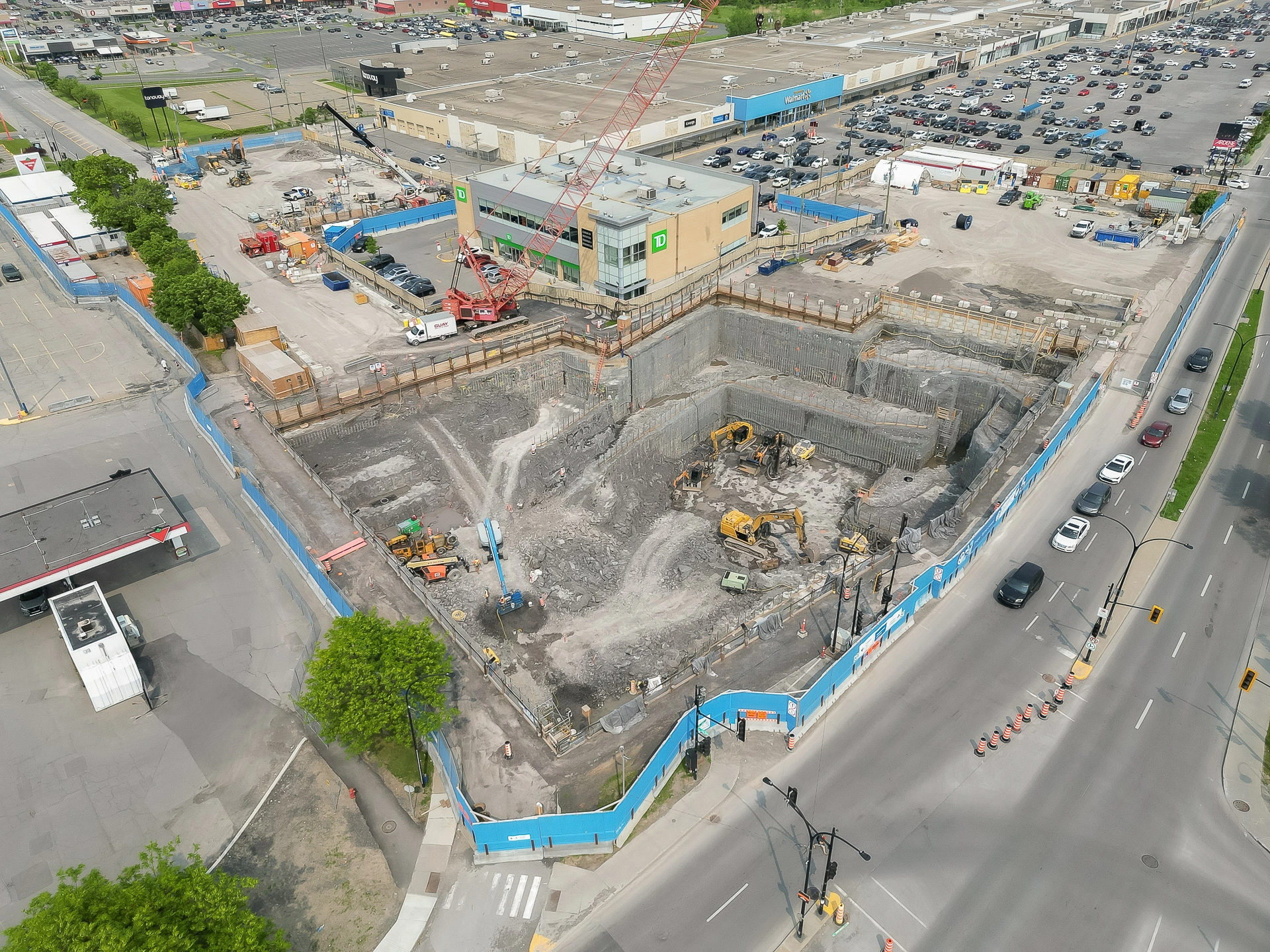Blue line project
The Blue Line Project in 2025, in a few key figures
After completing preparatory work and beginning excavation for three future métro stations in 2024, activity ramped up in 2025 with the launch of 10 new construction sites. See a summary of this past year in a few telling figures.
Changing the face of mobility in the east end of Montréal
Because the Blue line project is taking shape in densely built neighbourhoods, the project office is intent on integrating it seamlessly into the living environments through which it will pass. There is a strong commitment to delivering a project that is up to the standards of residents and customers alike, and that will coexist positively with the community both while construction is underway and when the new infrastructures are in operation. The new section is scheduled to open in 2031.
Latest newsThe blue line project worksitesToponymyArchitecture and artworksImpacts on mobilityFAQ
A large-scale project
Here is a list of all the infrastructures that will be built east of Saint-Michel station:
- 5 new accessible métro stations
- about 6 kilometres of tunnel
- 2 bus terminals
- 1 underground pedestrian tunnel providing a link to the Pie-IX BRT
- Pedestrian walkway under Autoroute 25 in Anjou
- Several equipments and operational infrastructures:
- 7 auxiliary structures housing operational equipment
- 1 power station
- 1 service centre for infrastructure maintenance
- 1 métro garage
- 3 rectifier stations
Public participation
let's chat
Public participation
Information sessions, talks, activities, good neighbour committees: our team wants to meet you!
The projet in images

Construction site of the future Vertières station (Pie-IX) in June 2025
Construction site of the future Césira-Parisotto station (Lacordaire) in June 2025
Construction site of the future Madeleine-Parent station (Langelier) in June 2025
Site of the future Mary-Two-Axe-Earley station (Viau) at the corner of Jean-Talon and Viau Boulevard
Bird's-eye view of the Viau site in June 2025
The future Anjou métro station will have two entrance buildings, one on each side of Highway 25
The blue line extension project follows in the wake of the Déclaration du gouvernement du Québec et de la Ville de Montréal to revitalize Montréal East. Many projects are underway to give a new impetus to this sector. Increased mobility, economic development, and improved living environments are at the heart of this ambitious project. For more information, see Québec.ca/RevitalisationEstMontreal (in French only).

